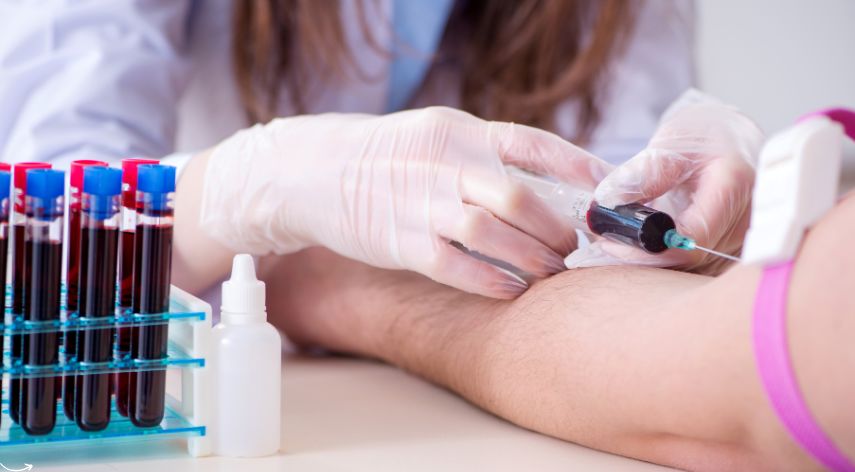Osteoporosis: Early Detection through Bone Profile Tests

Osteoporosis is often termed as a ‘silent’ disease, affecting millions of individuals, worldwide. The aging adults are mostly affected in osteoporosis, making their bones fragile and weak. This poses a greater chance of accidental bone fractures, even with minor falls and accidental bumps. The challenge with osteoporosis is that it often progresses without exhibiting any early symptoms until a serious bone fracture occurs. Here lies the need to obtain a timely detection– and bone profile tests play a pivotal role in this preventive healthcare approach. This blog will explore about osteoporosis in detail, with specific highlights on bone profile tests in detecting this disorder. Such an approach will help you identify the condition before serious complications set in. Read below.
Table of Contents
ToggleWhat Is Osteoporosis?
Osteoporosis is a bone condition in which the bones lose their density to an extent that they become prone to fractures. Porous and brittle bones are the main characteristics of osteoporosis. In a healthy person, old bone cells are constantly replaced by new cells However, when this balance between bone resorption and formation is disrupted, bone mass decreases, resulting in osteoporosis. This condition is often linked to aging, hormonal changes, and nutritional deficiencies. As per the findings of the International Osteoporosis Foundation (IOF), one in three females and one in five males (exceeding 50 years of age) will face osteoporotic fractures in their lifetime. Such fractures generally happen to the hip joint, spine, and wrists, leading to chronic pain. It also reduces mobility and disrupts overall quality of life.
Why Early Detection Matters?
As told, osteoporosis develops gradually without exhibiting any significant symptoms. However, over the years, you may notice certain signs, such as, back pain, height loss, etc. These symptoms occur due to spinal compression fractures, indicating that severe bone loss have already taken place.
Here is a list of advantages that early detection tests offer:
- Prevents fractures before they happen
- Helps build positive lifestyle and dietary habits
- Prompt medical intervention to decelerate bone loss
- Monitoring of bone health over time
What Is a Bone Profile Test?
A bone profile test is a simple blood test that quantifies specific markers associated with bone metabolism. It helps detect mineral imbalances and abnormalities that potentially denote bone disorders, including osteoporosis. While a bone profile blood test does not assess bone density directly like a DEXA scan, it provides valuable insights into your current bone health. Besides, it tells you how well your body is able to manage calcium, phosphorus, and other mineral elements needed for bone formation.
What Does a Bone Profile Test Include?
A typical bone profile test measures the following parameters:
- Calcium – It is an essential mineral required for bone strength. Both high and low levels of calcium can indicate potential bone issues.
- Phosphate – It works in association with calcium to build bones. Any abnormalities in its levels can denote bone disorders.
- Alkaline Phosphatase (ALP) – It is an enzyme linked to bone turnover. Elevated levels may reflect increased bone activity.
- Albumin – It is a protein that helps assess calcium levels more accurately. This is because some calcium ions bind to it, giving a detailed account of bone health.
- Parathyroid Hormone (PTH) – This hormone regulates the calcium and phosphate balance – an important criterion for bone metabolism.
- Vitamin D – It is an essential micronutrient for calcium absorption and bone health.
These tests, combined with clinical history and other investigations, can help doctors determine whether you’re at risk for osteoporosis or already affected.
Who Should Get a Bone Profile Test?
Not everyone requires a bone profile test, but certain individuals may benefit greatly from early screening. Here is a list of them.
- Postmenopausal women – Due to lower oestrogen levels which affect bone density
- Men over 50; especially having a family history of osteoporosis
- People with chronic ailments like rheumatoid arthritis, thyroid disorders, celiac disease, etc.
- Those on long-term medications such as, corticosteroids or anticonvulsants. These medicines can weaken bones significantly.
- Individuals with low body weight or frequent fractures
- Smokers and heavy alcohol users
The Role of Bone Profile Tests in Diagnosis and Monitoring
While a DEXA (dual-energy X-ray absorptiometry) scan remains the gold standard for diagnosing osteoporosis by directly measuring bone density, bone profile tests complement this by revealing underlying causes of bone loss.
Take an instance when your calcium level is too low or ALP is very high. In such cases, your doctor may investigate your condition in detail to know about the underlying hormonal imbalances or vitamin deficiencies. These valuable insights offer the doctor to craft an effective treatment plan.
Moreover, once treatment begins—whether through medication, supplements, or lifestyle changes—regular bone profile tests can help monitor your body’s response and ensure that your bones are benefiting from the intervention.
Benefits of Bone Profile Testing
A bone profile test is advantageous in the following ways:
- Non-invasive and quick
- Cost-effective and reliable
- Helps assess potential risks
- Guides to further testing and treatment procedures
Is it possible for Bone Profile Tests to Detect Osteoporosis Alone?
While bone profile tests offer excellent insights into bone health, they cannot detect osteoporosis solely. When combined with other methods, like, DEXA scans, physical assessments, and patient history evaluation, they offer the most benefit.
For example, you can have normal calcium levels but still suffer from bone loss (diagnosed after doing a DEXA scan). Similarly, you can have abnormal calcium and vitamin D levels, yet, not suffer from bone issues.
Taking Preventive Action
If you or a loved one is at risk for osteoporosis, do not wait for the symptoms to aggravate at a much later period. Discuss with your local healthcare provider whether to get bone profile tests (especially if the age is above 50 years). Also, look into other possible risk factors including, existing family history of fractures, ongoing medications that affect bone health, etc.
Here are some preventive strategies that can help you:
- Adequate intake of calcium and vitamin D
- Regular weight-bearing exercise
- Avoiding smoking and limiting alcohol
- Fall prevention in the elderly
- Monitoring bone health through routine tests
Conclusion
Osteoporosis is a silent disorder, producing severe consequences when left untreated. However, early bone profile blood tests offer a proactive way to determine bone health and manage it on time. When combined with other diagnostic tools and a healthy lifestyle, these tests can help prevent fractures, preserve mobility, and enhance quality of life as you age. Book an appointment today!
Lareal Young is a legal professional committed to making the law more accessible to the public. With deep knowledge of legislation and legal systems, she provides clear, insightful commentary on legal developments and public rights, helping individuals understand and navigate the complexities of everyday legal matters.
Recommended For You
Spread the loveIf you’ve recently had a blood test and noticed ‘eGFR’ on your report, here’s everything you need to
Spread the loveGastroshiza is a rare but serious birth defect that affects the abdominal wall of a developing fetus. While
Spread the loveHealth screening is a vital part of preventive healthcare which plays a crucial role in the maintenance of
Browse by Category
- Travel
- Technology & Gadgets
- Sports & Games
- Software
- Shopping
- Reviews
- Real Estate
- Numerology
- News
- Make Money
- Lifestyle
- Law
- Home Improvement
- Health
- Gardening
- Games
- Finance
- Entertainment
- Education
- Digital Marketing
- Diet and Fitness
- Dating
- Construction
- Celebrity
- Career and Jobs
- Business
- blog
- Angel Number





